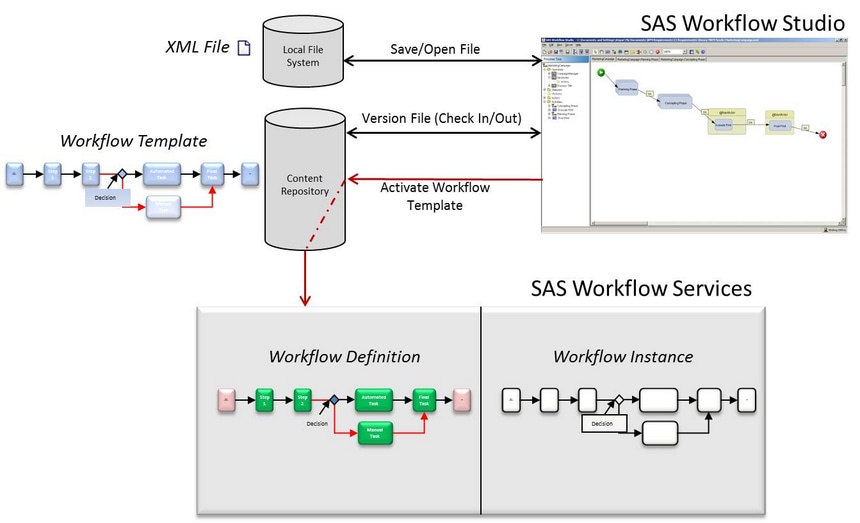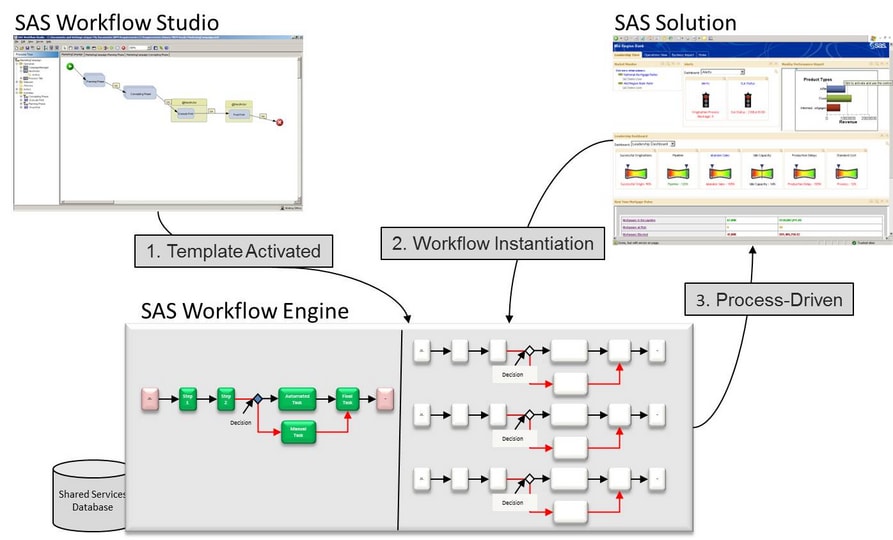Workflow Lifecycle
Each workflow defined
in SAS Workflow Studio is stored as a workflow template in XML format.
These templates can be opened from or saved to a local file system.
In addition, SAS Workflow Studio supports persistence and versioning
of the workflow templates using SAS Content Services. Finally, users
can activate the workflow templates, which results in uploading the
specified version as a formal workflow definition via SAS Workflow
Services for instantiation by end-user client applications.
Note: Process changes made in SAS Workflow Studio do not take
effect until the new version is uploaded and activated. Once activated,
any new processes started use the newly activated version while any
currently running process instances continue using their respective
version of the workflow definition. For details, seeDeploying and Maintaining Processes.
Together, the SAS Workflow
Studio and SAS Workflow Services provide the ability to manage workflows
that can be leveraged by solutions—including CRM, manufacturing,
health care, and manufacturing—as platform components for process
automation. Solutions integrate with SAS Workflow Services using technologies
such as Web Services or published Java APIs to launch workflows, receive
workflow status updates, generate notifications, generate alerts,
and monitor workflow progress.

